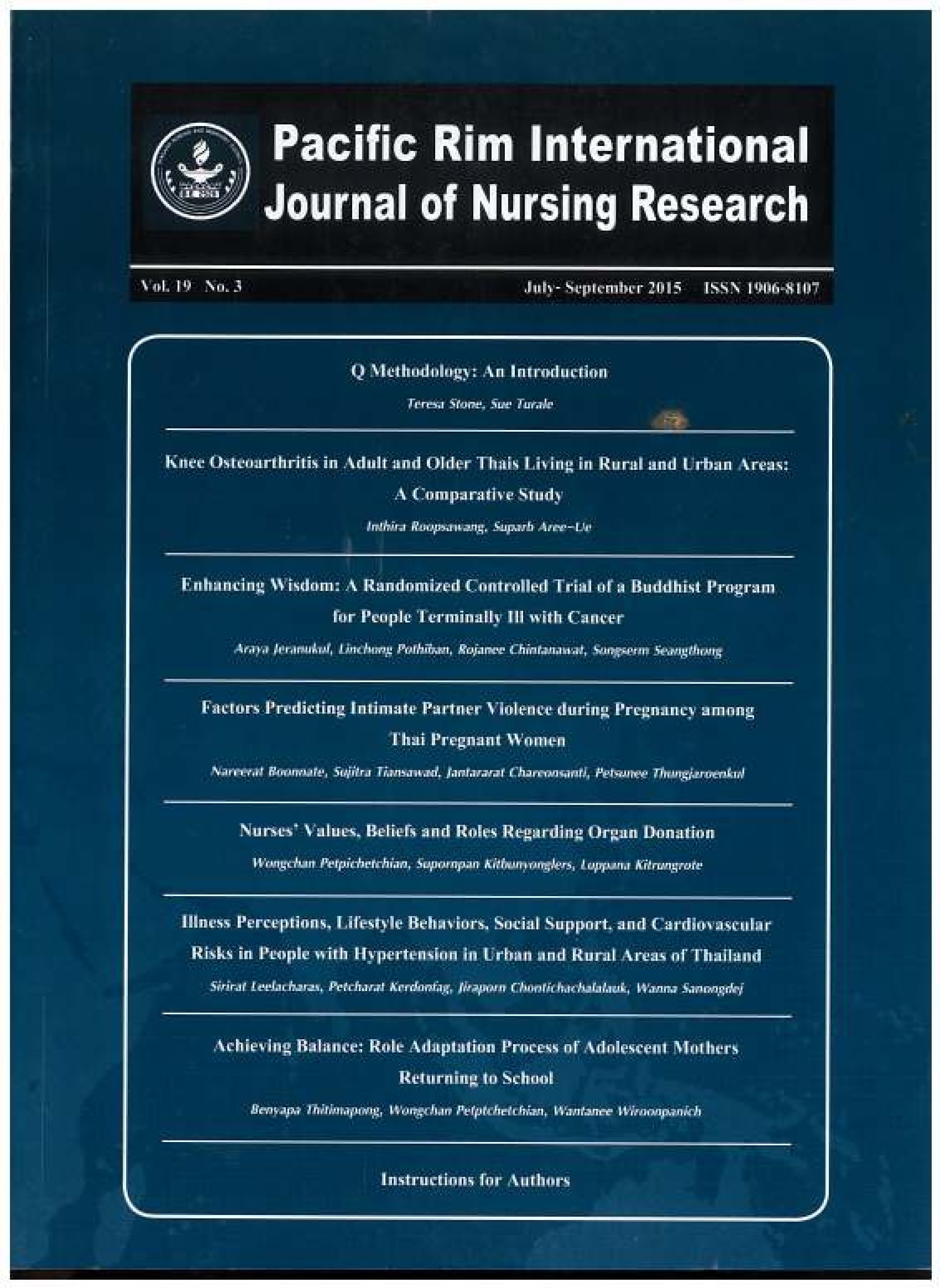Illness Perceptions, Lifestyle Behaviors, Social Support, and Cardiovascular Risks in People with Hypertension in Urban and Rural Areas of Thailand
Keywords:
Cardiovascular risk, Hypertension, Illness perception, Lifestyle behaviorsAbstract
While hypertension is the major health problem internationally, little is known about how Thais with hypertension, especially those living in urban and rural areas, perceive hypertension or behave in order to avoid cardiovascular risks and to keep their blood pressure under control. This study compared differences in perceptions of hypertension, lifestyle behaviors (diet, exercise, and medication-taking), social support, and cardiovascular risks in out-patient Thais with hypertension in urban and rural areas. A cross-sectional survey was conducted at four urban Bangkok Health Centers and at two primary care units in rural areas. A convenience sample of 660 participants, with 50% living in urban areas, was assessed by interview and chart review, and six instruments were used for assessment: the Brief Illness Perception Questionnaire, four scales related to eating, exercise, medication-taking, and social support, and a screening tool for cardiovascular risks. The mean scores of eating, exercise, and medication-taking behaviors, and brief illness perception subscales (except timeline) in urban areas were significantly higher than those in rural areas. There were no differences in mean scores in perceptions about the time of having hypertension (timeline), social support, and cardiovascular risks between these two groups. Our findings provide nurses and other health workers with a better understanding of hypertension perceptions, lifestyle, and medication-taking behaviors in Thais from both areas. These findings will help inform nurses in order to create practical strategies using meaningful information for hypertension and lifestyle modification.
Downloads
Published
How to Cite
Issue
Section
License
Copyright: The Pacific Rim International Journal of Nursing Research, Thailand Nursing & Midwifery Council has exclusive rights to publish, reproduce and distribute the manuscript and all contents therein.








.png)



